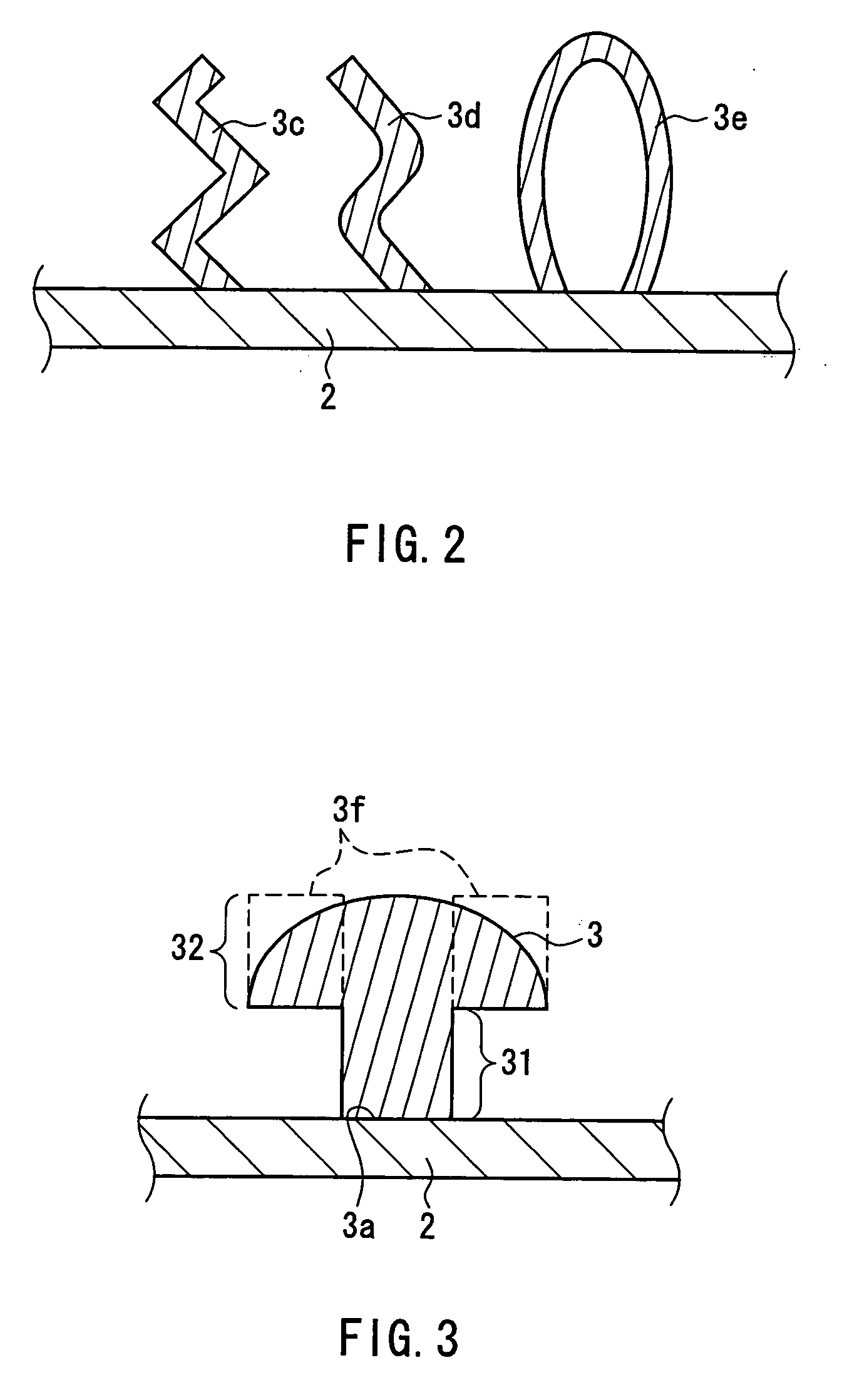Battery and non-aqueous electrolyte secondary battery using the same
a secondary battery and non-aqueous electrolyte technology, applied in the direction of negative electrodes, electrochemical generators, cell components, etc., can solve the problems of reducing the contact point between the electrode materials, lowering the charging/discharging efficiency of the battery, internal short circuit, etc., to improve the energy density of the battery, high charging/discharging cycle property, and high property
- Summary
- Abstract
- Description
- Claims
- Application Information
AI Technical Summary
Benefits of technology
Problems solved by technology
Method used
Image
Examples
embodiment 1
(Embodiment 1)
FIG. 1 is a schematic cross-sectional view showing an example of a negative electrode of the present invention. The negative electrode 1 shown in FIG. 1 includes a current collector 2 and an electrode material layer 5 including an electrode material 4 capable of reversibly absorbing and desorbing Li ions. The electrode material 4 includes at least one element selected from Si, Sn and Al. Therefore, the negative electrode 1 can reversibly absorb and desorb Li ions. Furthermore, a negative electrode with a high-capacity (high-energy density) can be achieved as compared with the case where carbon materials such as graphite, i.e., a conventional material for a negative electrode, is used for an electrode material. Note here that FIG. 1 is a schematic diagram and does not reflect the structure of the real negative electrode as it is.
Furthermore, in the negative electrode 1 of the present invention, on the surface of the current collector 2, protrusions 3 are formed. The e...
embodiment 2
(Embodiment 2)
Next, one example of a secondary battery of the present invention will be described. FIG. 6 is a schematic cross-sectional view showing a coin type battery that is one example of the secondary battery of the present invention. In the battery shown in FIG. 6, a positive electrode 11 and a negative electrode 1 are laminated with a separator 12 interposed therebetween. Furthermore, the positive electrode 11 is electrically connected to the positive electrode case 13 that functions also as a positive electrode terminal; and the negative electrode 1 is electrically connected to a sealing plate 14 that also functions as a negative electrode terminal. Furthermore, entire battery is sealed with a gasket 15. Thus, the secondary battery of the present invention has the negative electrode 1 capable of preventing the electrode material from peeling off. Therefore, charging / discharging cycle property can be improved.
examples
Hereinafter, the present invention will be described in more detail according to examples. However, the present invention is not limited to the following examples.
PUM
 Login to View More
Login to View More Abstract
Description
Claims
Application Information
 Login to View More
Login to View More - R&D
- Intellectual Property
- Life Sciences
- Materials
- Tech Scout
- Unparalleled Data Quality
- Higher Quality Content
- 60% Fewer Hallucinations
Browse by: Latest US Patents, China's latest patents, Technical Efficacy Thesaurus, Application Domain, Technology Topic, Popular Technical Reports.
© 2025 PatSnap. All rights reserved.Legal|Privacy policy|Modern Slavery Act Transparency Statement|Sitemap|About US| Contact US: help@patsnap.com



